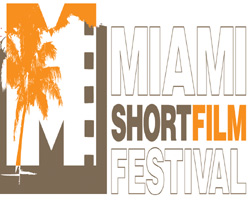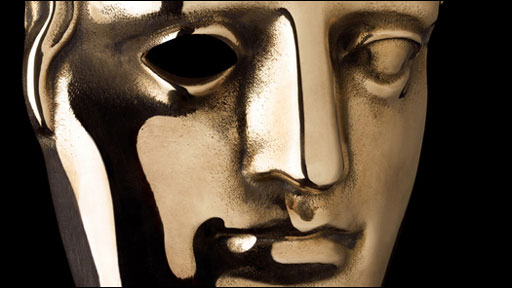|
|
||
|
Pro Tools
FILMFESTIVALS | 24/7 world wide coverageWelcome ! Enjoy the best of both worlds: Film & Festival News, exploring the best of the film festivals community. Launched in 1995, relentlessly connecting films to festivals, documenting and promoting festivals worldwide. Sorry for the disruptions we are working on the platform as of today. For collaboration, editorial contributions, or publicity, please send us an email here. User loginActive Members |
ÉCU-The European Independent Film FestivalÉCU - The European Independent Film Festival is dedicated to the discovery and advancement of the very best independent films from around the world. We are a festival who believes in our independent filmmakers and their artistic talents. ÉCU proudly provides a unique platform that brings together diverse audiences who are hungry for something other than major studio productions and original and innovative filmmakers.
The 16th edition of ÉCU - The European Independent Film Festival will take place on 9th-11th April 2021. Now open for submissions!
For more details regarding the festival, please visit our website at www.ecufilmfestival.com.
 Meet Indie Filmmaker: AFTER THE WATER THE CLOUDS
Having recently won “Best Art Film” at the Monaco International
Film Festival, we asked director Carmen Rozestraten to elaborate on the inspiration behind her submission to ÉCU 2010, “After The Water The Clouds.” By Lindsay Mayer
Q: I love the opening shot in this film. How did you get the idea for it?
The opening shot? The original title was “Dreams Of Sleepy Feet”… I love water. I also love feet…. I tried to use the feet to meet and *feel* the different characters. The dance in the fountain became problematic because there was a drought in Barcelona so they turned off the fountains one by one. In the end we only had 2 hours to do the fountain dance. If we had had more time I probably would have elaborated a little on the underwater shot.
Q: What was the source of inspiration for the storyline?
A friend of mine claims
it is autobiographical. Maybe he is right. A dancer meets interesting characters during her carreer then in the end takes off her shoes (quits dancing) and goes on with her life.
Q: Where was the film shot?
Barcelona. Location is very important for me and I spend a lot of time looking for the right ones. I tend to hang around the different locations for a while to feel the place. I did not think of Maureen (the dancer) opening the iron grit in front of the fountain to find the apple. One of the homeless used this place to store his foot ball and food. I just happened to see him do it.
Q: The dancer, where did you find her? Why the choice of contemporary dance vs. other styles?
Maureen is an amazing dancer. I had seen her on stage years ago
and was dyyyyyyying to work with her. I feel incredibly lucky we finally could and I hope there is a lot more to come. All my characters are the most amazing wonderful and unusual artists… and my friends. My cameraman, Enric Miro did an amazing job… and for no pay. It was a very low budget film so he borrowed a camera for a bottle of cognac and a tripod for a bottle of wine. Also, when everything went wrong (the roses were being blown over by a hurricane, the taxi didn’t show up when I had to take 4 huge balloons to the shoot and no [one] would take me, the guard at the library wanted to destroy the film material because we had been shooting illegally etc. etc.), he kept saying… “No te preoccupas” (Don’t worry!), a very good trait for a cameraman to have. The style of choreography? My choreographies tend to be more neo-classical leaning towards modern. This time I was solely inspired by Maureeen and the music and something very different came out.
Q: The color red appears often in the film. Is it as symbolic as much as it is visual?
The color red? I am not sure. A coincidence? At one point I tried
red apples but I didn’t like the way they looked against the stone. The green ones worked better. I did imagine Maureen in a beautiful red dress though, am not sure why.
Q: This film is very
Am glad you felt that way. This film was actually a kind of fore
study for a docudrama I want to make about the children of Iran. I thought the children would enjoy playing with these kind of materials. Every character in the film identifies with an object and after Maureen runs into them, she absorbs their instinct, knowledge, feeling and continues “her voyage.” Q: The music to this film is haunting yet whimsical… How did Antoni Marti come up with the soundtrack?
I had asked Toni (Marti) if he had some music I could use for a
choreography… I could not use it but I liked his music so much that I decided to make a film based on it. It became ["the red dress dance"] and set the tone for the whole film. We did have some trouble composing the rest so I ended up using some of his existing music. His music is wonderful and whimsical and sometimes reminds me a little of Nina Rota. Q: Tell me about the meaning behind the title, “After The Clouds The Water”.
For me, after the water the clouds is an inspiring positive title.
I think about clouds as the puffy white soft shapes that hang in the sky and look so inviting to disappear into… at the end of the film Maureen floats off into the sky. My friend pointed out that clouds could have a negative connotation… it hadn’t occurred to me. It’s also a title of one of Magritte’s paintings.
Q: Tell me a quote that has always inspired you.
I get more inspired by nature, life. Things that are happening in the street, people I meet, books.
15.12.2009 | ÉCU-The European Independent Film Festival's blog Cat. : Arts Barcelona cameraman Carmen Rozestraten Creativity dancer Director Entertainment Entertainment food guard Law Law Lindsay Mayer Maureen Musical theatre Natural Disaster Nina Rota Person Career Pulitzer Prize for Drama Rent the Monaco International Film Festival
|
LinksThe Bulletin Board > The Bulletin Board Blog Following News Interview with EFM (Berlin) Director
Interview with IFTA Chairman (AFM)
Interview with Cannes Marche du Film Director
Filmfestivals.com dailies live coverage from > Live from India
Useful links for the indies: > Big files transfer
+ SUBSCRIBE to the weekly Newsletter DealsUser imagesAbout ÉCU-The European Independent Film Festival Hillier Scott Hillier Scott (ECU)
Scott Hillier, Founder and President of ÉCU - The European Independent Film Festival
Scott Hillier is a director, cinematographer, and screenwriter, based in Paris, France. In the last 20 years, Hillier has gained international recognition from his strong and incredible cinematography, editing, writing, producing and directing portfolio in both the television and film industries.
Scott began his career in the television industry in Australia. In 1988, he moved to London getting a job with the BBC who then set him to Baghdad. This opportunity led him to 10 years of traveling around world for the BBC, mainly in war zones like Somalia, Bosnia, Tchetcheynia, Kashmir, and Lebanon. After a near fatal encounter with a Russian bomber in Tchechnyia, Hillier gave up his war coverage and began in a new direction.
He moved to New York City in 1998. He directed and photographed eight one-hour documentaries for National Geographic and The Discovery Channel. Based on his war knowledge and experience, Hillier wrote and directed a short film titled, “Behind the Eyes of War!" The film was awarded “Best Short Dramatic Film” at the New York Independent Film and TV Festival in 1999. From that he served as Supervising Producer and Director for the critically acclaimed CBS 42 part reality series, "The Bravest” in 2002 and wrote and directed a stage play called, "Deadman’s Mai l," which ran at Le Théâtre du Moulin de la Galette in Paris during the summer of 2004. He then became the Director of Photography on a documentary titled, “Twin Towers." This was yet another life changing experience for Hillier. The riveting documentary won an Academy Award for "Best Documentary Short Subject" in 2003. In 2004, Hillier changed continents again, spending three months in Ethiopia. He produced “Worlds Apart,” a pilot for ABC America / True Entertainment / Endemol. As you can see, Hillier was and is always in constant movement and enjoys working in a number of diverse creative areas including documentaries, music videos, commercials, feature and short films.
Scott studied film at New York University and The London Film and Television School. He also studied literary non-fiction writing at Columbia University. Hillier's regular clients include the BBC, Microsoft, ABC, PBS and National Geographic. Between filming assignments, he used to teach film, a Masters Degree course in Screenwriting at the Eicar International Film School in Paris, France and journalism at the Formation des Journalistes Français in Paris, France.
View my profile Send me a message The EditorUser contributionsUser links |












